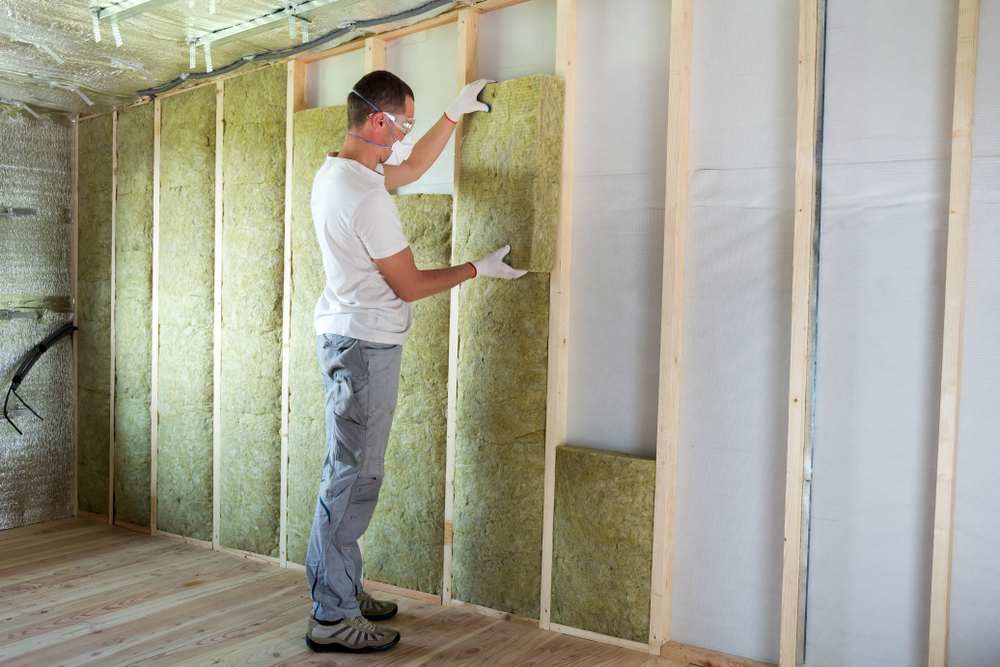Insulation Requirements for New Home Construction
Good insulation is the backbone of any efficient and sustainable home. As we move towards a future where energy efficiency and sustainability are not just valued but expected, understanding the nuances of insulation requirements for new construction becomes increasingly important. This guide aims to shed light on the varied aspects of insulation requirements for new home constructions, ensuring that every build not only meets but exceeds the standards of modern living.
Choosing the Right R-Value for Exterior Walls
The R-value is a measure of how well a two-dimensional barrier, such as a layer of insulation, resists the conductive flow of heat. Essentially, it indicates the insulation’s thermal resistance. The higher the R-value, the better the material is at insulating. With this understanding, selecting the right R-value for your exterior walls becomes a critical decision in ensuring energy efficiency and comfort. This decision is integral to determining what is the best insulation for new home construction.
Selecting the ideal R-value for exterior walls involves understanding the science of thermal resistance and how it applies to your specific situation. The right R-value for your home depends on several factors:
- Regional Climate: Different climates require different levels of insulation. For example, a home in a colder northern climate will benefit from a higher R-value to retain heat, while homes in milder climates might not need as much insulation. Consult local building codes and climate zone maps to understand the recommended R-value for your area.
- Home Design: The design of your home, including its size, orientation, and construction type, affects its insulation needs. Larger homes with more surface area might need higher R-value insulation to maintain energy efficiency. Similarly, homes with more exposure to the elements might require better insulation to combat heat loss or gain.
- Current Building Codes: Building codes are continually updated to reflect the latest standards in energy efficiency. Ensure that the insulation you choose meets or exceeds these requirements to not only comply with the law but also to ensure optimal energy savings.
Types of Insulation for Optimal Performance
Selecting the best insulation for new construction stages involves understanding each material’s properties and how they fit into the project timeline. However, it’s crucial to consult with a professional as practices can vary based on specific project needs and local building codes.
- Fiberglass: Ideal for initial framing stages due to its versatility and cost-effectiveness, it requires precise installation to maximize its decent R-value.
- Cellulose: Best applied post-framing, it’s eco-friendly and excellent for filling irregular spaces in attics and walls.
- Spray Foam: Perfect for creating an airtight seal during the final stages, offering superior R-values and filling gaps comprehensively.
- Rigid Foam Boards: Great for exterior walls at any stage, providing high R-values and moisture resistance.
- Mineral Wool: Exceptional for fire resistance and soundproofing, suitable for walls and ceilings at various stages.
- Cotton (Denim): An eco-friendly option, ideal for post-framing and retrofitting due to its excellent thermal and acoustic properties.
- Sheep’s Wool: Natural and sustainable, good for thermal and moisture control, often used in residential projects at various stages.
Each type has its place in construction, and the best choice often depends on the specific needs of the project, budget, and desired energy efficiency.
Insulation Installation Techniques for Maximum Efficiency
Proper installation is crucial for insulation to perform effectively. Common tips for ensuring maximum efficiency include:
- Seal Gaps and Cracks: Before installing insulation, seal all gaps and cracks in the construction to prevent air leaks. This step is crucial for maintaining a consistent temperature and reducing energy loss.
- Avoid Compression: Insulation must maintain its loft to be effective. Avoid compressing material, as this reduces its R-value and effectiveness.
- Pay Attention to Detail: Ensure coverage is complete, with no gaps or voids. Special attention should be given to areas around windows, doors, and other penetrations.
A professional installer can ensure that insulation is applied correctly, but understanding these principles can help you oversee the project and ensure quality.
Enhancing Your New Build with Smartech’s QUATTRO Insulation
When considering insulation for your new construction, Smartech’s QUATTRO Insulation emerges as an advanced and versatile option. Its unique characteristics make it an ideal all-in-one solution, functioning as an insulation material, vapor barrier, and roof membrane. Here are some key features of QUATTRO Insulation that stand out:
Multi-layer Composition: QUATTRO Insulation is a thin, multi-reflective material with four layers of aluminum, thermally-welded across all surfaces. This structure enhances its thermal resistance and durability.
Environmental Safety and Durability: The components of QUATTRO Insulation are environmentally safe, offering a non-toxic solution with an impressive lifespan. Its durability is unmatched, ensuring long-term performance
Reflective Power and Air Impermeability: QUATTRO’s pure aluminum layers reflect 96% of radiant heat and are treated against oxidation, significantly reducing heat transfer. Its air impermeability forms an envelope that minimizes energy loss caused by airflow.
Sound Insulation: The flexible nature of QUATTRO Insulation makes it highly effective for sound insulation, adding to the comfort of your living space.
Fire Resistance: QUATTRO Insulation has a Fire Resistance Classification of ASTM E84 Class 1 / Class A. It produces no toxic or irritating burn gases when exposed to flame, making it a safe choice for various applications.
Effective R-Value: In exterior wall systems with a 0.75” air space, QUATTRO reflective insulation can increase the R-value of the assembly by R-4.15. This effectiveness meets the FTC requirements for reflective insulation in specific climate conditions.
As you design your new home, consider the long-term impact of your insulation choice. QUATTRO Insulation offers a unique blend of performance, durability, and energy efficiency, setting your home apart. Visit the Smartech QUATTRO Insulation website to explore more about this innovative insulation solution and its benefits for your construction project.

Looking for More Information?
Check out our Resources or Contact Us
